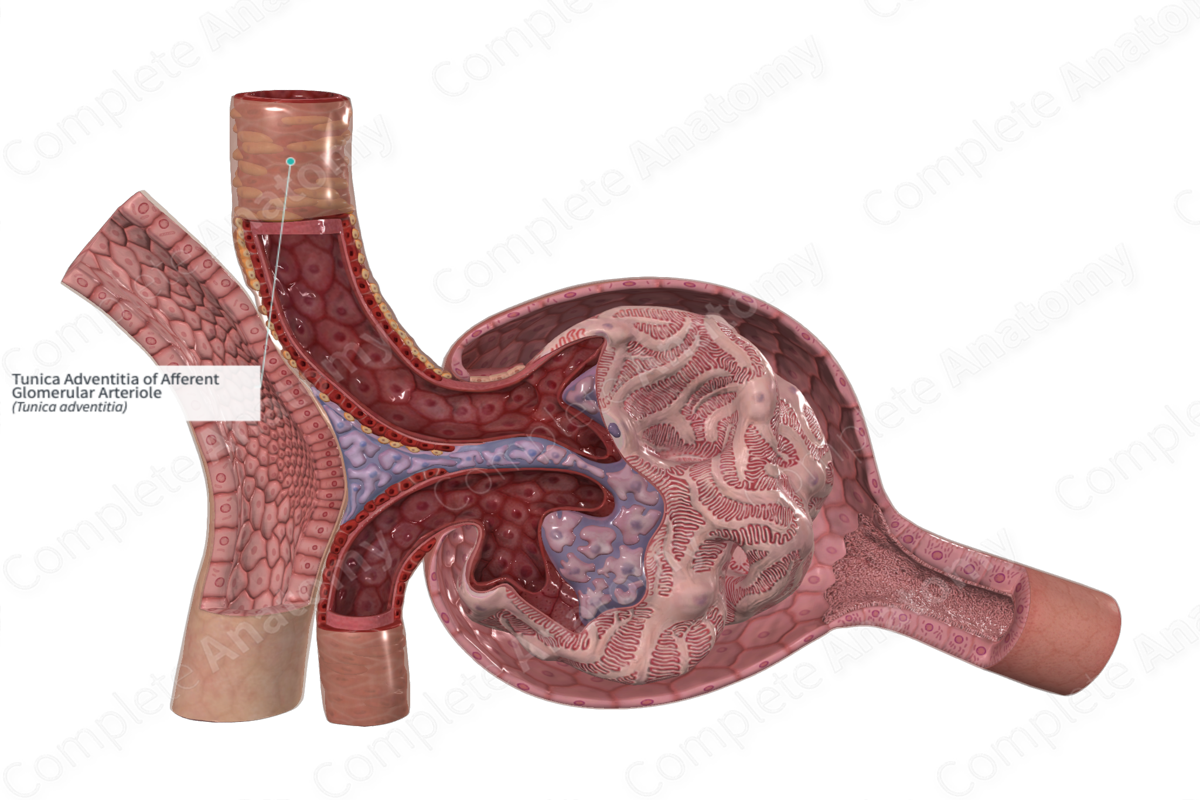
Quick Facts
The tunica adventitia is the outermost covering of an organ, vessel, or other structure, which is made up of connective tissue and elastic fibers and is in contact with surrounding structures (Dorland, 2011).
Structure and/or Key Feature(s)
The tunica adventitia of an arteriole is the outermost layer of connective tissue composed mostly of collagen and small amounts of elastic fibers that merge with surrounding loose connective tissue. In both the afferent and efferent arterioles, the tunica adventitia is extremely thin.
Anatomical Relations
An arteriole has three layers (or tunics). The tunica adventitia of an arteriole is the outermost layer of a blood vessel that merges with surrounding loose connective tissue. The tunica media is adjacent to the outer adventitia layer as the middle layer of a blood vessel. The layer adjacent to the blood vessel lumen (or inner layer) is the tunica intima.
Function
The tunica adventitia of an arteriole is the outermost layer of connective tissue that merges and attaches the blood vessels with surrounding loose connective tissue.
References
Dorland, W. (2011) Dorland's Illustrated Medical Dictionary. 32nd edn. Philadelphia, USA: Elsevier Saunders.
